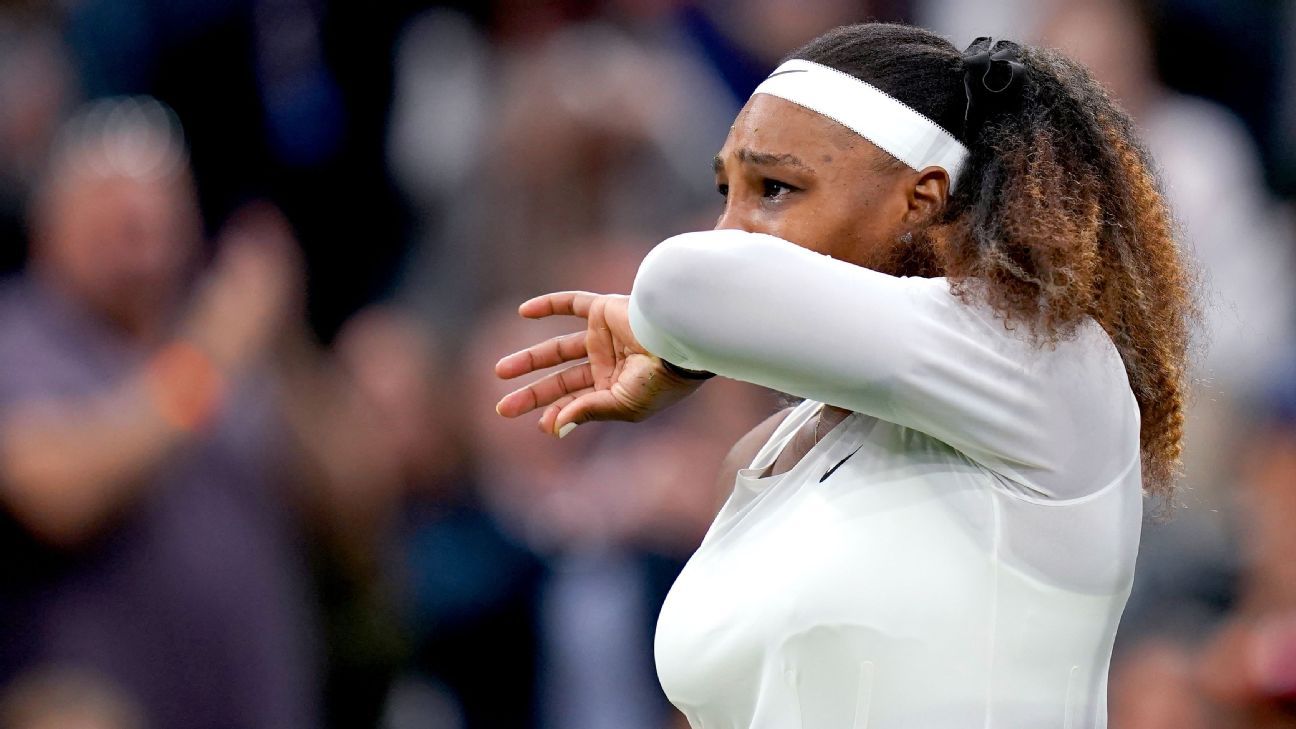LONDON — The injury to Serena Williams, who retired midway through the first set of her match with Aliaksandra Sasnovich after twice slipping on the Centre Court grass in the same game, provoked headlines and questions.
Is the Wimbledon grass more slippery than usual? Has anything changed? Is it just a case of the heavy, damp conditions having an extra effect?
Williams’ injury, which followed a knee injury to Frenchman Adrian Mannarino when he was testing Roger Federer to the limit, was, of course, a huge shame for Williams and for the All England Club, for whom the quality of the grass courts is everything.
But it is also not surprising. In fact, it’s relatively normal.
Centre Court is only played on for two weeks every year, during the Championships. The other 50 weeks of the year, it is out of bounds to all the club members to keep it pristine for Wimbledon itself.
That means that it’s in perfect shape, but also that it tends to be lush in the first few days until a large number of players have competed on it and worn it down a little.
“I don’t think it plays very different [this year],” Federer, the eight-time Wimbledon champion, said about how the grass plays early in the fortnight.
“Those first two matches are always extremely difficult. But it’s always been like this. I feel for a lot of players, it’s super-key to get through those first two rounds because the grass is more slippery, it is more soft. As the tournament progresses, usually [the court] gets harder and easier to move on.”
Grass is a surface that requires specific movement, asking players to stay lower than usual, taking extra care of their ankles, in particular.
Players these days are well used to having their ankles taped, but even with all the precautions and the knowledge of what’s needed, one misstep and an injury can occur.
The intermittent rain of the first two days did not help. When it’s hot and dry overhead, the grass dries faster; when it’s damp, it takes longer to dry.
“The weather conditions on the opening two days have been the wettest we have experienced in almost a decade, which has required the roof to be closed on Centre Court and No.1 Court for long periods,” The All England Club said in a statement. “This is at a time when the grass plant is at its most lush and green, which does result in additional moisture on what is a natural surface.”
The roof over Centre Court, which was installed in 2008, allows play when it’s wet but those who have played under it have said how heavy and how humid the conditions can be.
“I do feel it feels a tad more slippery maybe under the roof,” Federer said. “I don’t know if it’s just a gut feeling. You do have to move very, very carefully out there. If you push too hard in the wrong moments, you do go down.
“I do feel it’s drier during the day. With the wind and all that stuff, it takes the moist out of the grass. But this is obviously terrible, that it’s back-to-back matches and it hits Serena as well. Oh my god, I can’t believe it.”
Andy Murray and Billie Jean King were among those to tweet their thoughts on the lush court conditions ultimately leading to Williams’ withdrawal from the tournament.
Brutal for @serenawilliams but centre court is extremely slippy out there. Not easy to move out there.
— Andy Murray (@andy_murray) June 29, 2021
Saddened to see Serena’s Wimbledon end with an injury.
She’s a champion, and I hope she’s back on the courts soon. https://t.co/zEEtG9YHgk
— Billie Jean King (@BillieJeanKing) June 29, 2021
World No. 1 Novak Djokovic, who slipped several times himself in his first-round win over Jack Draper on Monday, also expressed his concern.
“I was kind of slipping a few times on those breakpoints,” he said. “Still finding my footing, I would say, on the grass that was quite slippery, quite moist. It was probably because of the roof.”
It is far from the first time players have slipped on the courts at Wimbledon.
In 2013, a number of players slipped, including Maria Sharapova, and many, such as Victoria Azarenka, suffered injuries on the same day, dubbed “Wacky Wednesday” by the British media.
As she lost in the first round that year, Sharapova said: “How many more times? This court is dangerous.”
Two years later, Wimbledon moved back a week in the calendar, and it was thought that playing the tournament in the first two weeks of July would bring dryer, warmer weather.
But in 2017, Murray and Federer were among those to criticize the courts for being too slippery, with the hot weather in the tournament’s buildup considered to be the reason. Players were slipping on the excessively dry courts.
Whenever there are injuries, especially to the most famous players, criticism soon flows. But unless something has actually changed with the grass — and Wimbledon has yet to respond officially — then players will have to remember, this is how things are on the grass.
“Our long-serving Grounds team have experienced nearly every combination of weather conditions possible,” The All England Club said in its statement. “They keep abreast of and [utilize] the latest grass court technologies, prepare for every weather eventuality and react to the current conditions on a daily basis.
“We will continue to monitor these readings and adjust our care plan for the grass appropriately.”
